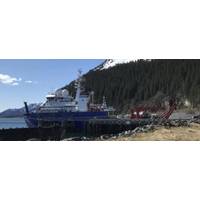
Satellite data from Ship Captures Landslide-Generated Tsunami
warnings, but these methods don’t always capture localized ground movement caused by landslides.Now, for the first time, scientists have detected tsunami waves caused by a landslide using data from a ship’s satellite receiver. The CIRES and CU Boulder-led research, published in Geophysical Research Letters, shows the potential for the approach to improve tsunami detection and warning, providing life-saving information to coastal communities.“Landslides into water can produce a tsunami, and some of them can be quite large and destructive,” said CIRES Fellow Anne Sheehan, a professor
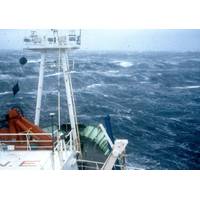
Research Vessel Discovery and "The Night of Monster Waves"
this was driven a resonance effect, where two unusual days of consistent westerly winds had matched the speed of the waves, helping to drive them into higher and higher peaks.”Royal Research Ship (RRS) Discovery. Image courtesy NOCThe research stemming from that night, published in Geophysical Research Letters, shed light on the resonance phenomenon.Due to the storm’s high wind speeds matching the speed of the waves, energy was continually added in the system.“It’s a bit like pushing a swing at just the right moment—each push adds more height,” says Professor Holliday

Warming Predictions Point to Need for Adaption as well as Decarbonization
Researchers have found that the global goal of limiting warming to 1.5 degrees Celsius above pre-industrial levels is now almost certainly out of reach.A new report published in Geophysical Research Letters suggests that there is a 50% chance that global warming will exceed 2 degrees Celsius even if humanity meets current goals of rapidly reducing GHG to net-zero by the 2050s."We've been seeing accelerating impacts around the world in recent years, from heatwaves and heavy rainfall and other extremes. This study suggests that, even in the best case scenario, we are very likely to experience

Mauritian Climate Activist Holds Underwater Protest to Protect Seagrass
of miles from shore has provided some protection up to now, the young activist scientist worries that could change if oceans become busier.Global shipping traffic increased four-fold between 1992 and 2012 with the Indian Ocean seeing one of the sharpest rises, according to a 2014 study in Geophysical Research Letters.Meanwhile, Mauritius is also still grappling with its worst-ever ecological disaster, caused in July when a Japanese ship hit a coral reef and spilled some 1,000 tonnes of oil into aquamarine waters that then washed up onto beaches.Against the backdrop of such events, Sandooyea said she
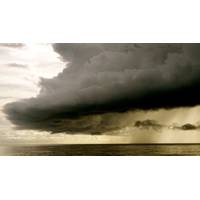
Arctic Melt Leads to Enhanced Storms
circulation, which then results in a cooling of the North Atlantic. Our new study shows that freshwater achieves this cooling much more rapidly and efficiently by triggering atmospheric feedbacks,” said NOC's Marilena Oltmanns, lead author of the study published in the Journal of Geophysical Research Letters this week.Freshwater creates shallower surface layers that adjust faster to the lower air temperature in autumn and winter. This increases the north-south temperature gradient, promoting the occurrence of storms. The storms in turn reinforce the cooling by triggering increased ocean heat
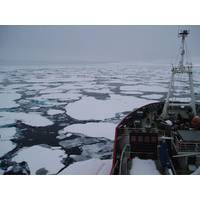
#Oi2020 History
the ice mixes with a relatively warm, salty layer below it. This mixing is caused by turbulent motions, such as internal waves and eddy currents, which are likely to increase as the sea-ice thins and breaks up, causing a positive feedback effect. The study as published in the Journal of Geophysical Research Letters, identified differences in how energy is distributed by turbulent motions in the Arctic when compared to open, ice-free seas. The findings also showed that the turbulence was very similar in Arctic regions with high and low amounts of sea-ice. This suggests that the turbulence in the Arctic
Tracking Ship Emissions from Space
and the University of Oxford shows how satellite tracking could be used to monitor compliance with the upcoming IMO 0.5% sulfur emission regulations and Emission Control Areas (ECA).Research conducted by their own researchers, UCL Energy and the University of Oxford and published today in Geophysical Research Letters, has unveiled discoveries that appear important on many levels for they describe the impact of shipping emissions on the climate: because fossil fuel emission particles from ships affect the air including by releasing sulfur, they affect clouds and consequently the environment.Acknowledging

RBR Order to Support Great Lakes RAEON
; T loggers (internally recording and powered temperature instruments) will be used in conjunction with acoustic telemetry arrays in Lake Ontario for the long-term monitoring of how the temperature in the lake changes over annual and inter-annual time scales. Based on work published in Geophysical Research Letters, the high accuracy of the RBRsolo³ T temperature measurement is required to measure and resolve the small changes in the vertical structure of lake temperature that drive seasonal circulation and track long-term changes.Over 20 RBRmaestro³ CTD multiparameter data loggers were
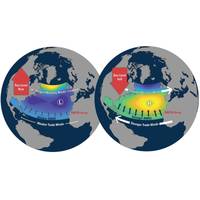
Currents Not Linked to New England Sea Level
There is no direct link between major North Atlantic ocean currents and sea level along the coast of northeastern United States, according to a recent study by the Woods Hole Oceanographic Institution (WHOI).The study, published last week in the journal Geophysical Research Letters, examined both the strength of the Atlantic Meridional Overturning Circulation (AMOC)—a conveyor belt of currents that move warmer waters north and cooler waters south in the Atlantic—and historical records of sea level in coastal New England.“Scientists had previously noticed that if the AMOC is stronger
 December 2025
December 2025





